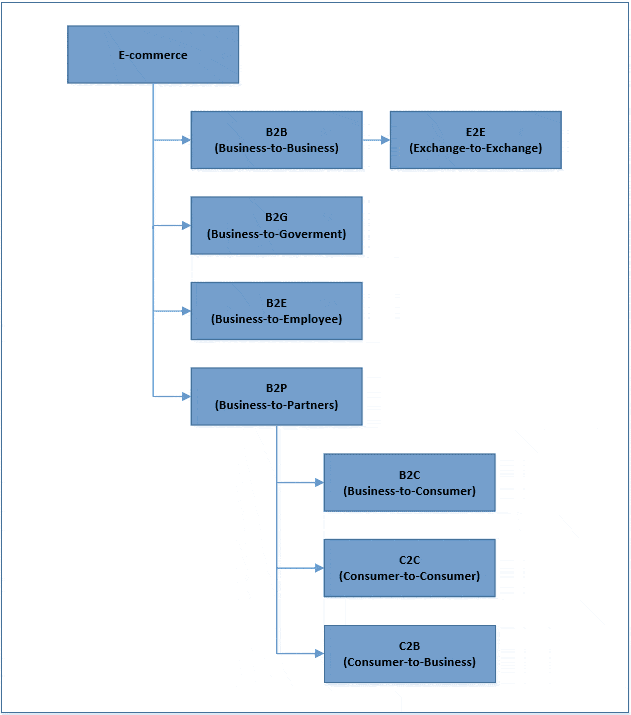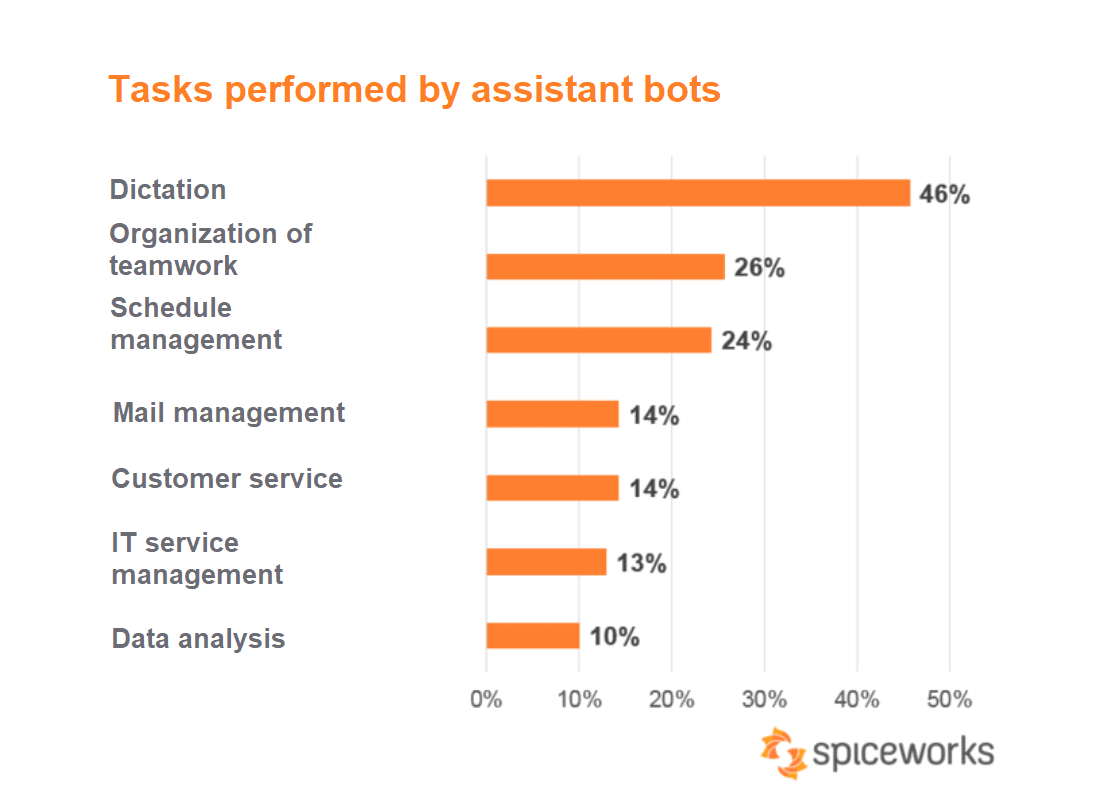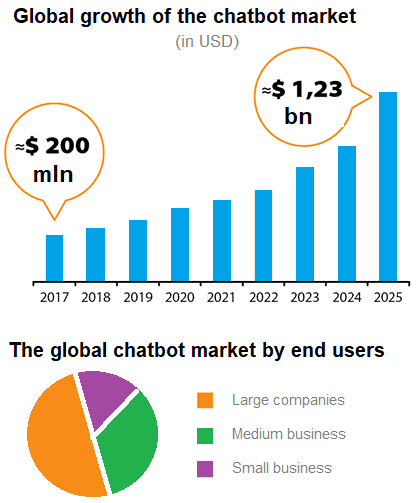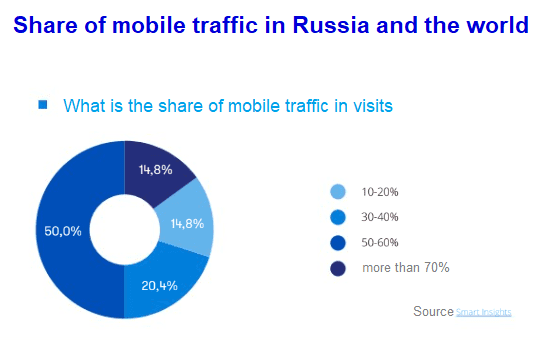Abstract
Attention! At the time of writing this abstract, the master's work is not completed. Estimated completion date – May 2022. The full text of the work and materials on the research can be obtained from the author or his scientific adviser after the specified date.
Content
- Introduction
- 1. Theme urgency
- 2. Goal and tasks of the research, expected outcomes
- 3. Scientific novelty
- 4. Overview of research and development
- 4.1 Overview of international sources
- 4.2 Overview of national sources
- 4.3 Overview of local sources
- 4.4 Review results
- 5. Analysis of e-commerce systems
- 5.1 A Brief History of Electronic Commerce
- 5.2 A Place, a role and classification of e-commerce systems
- 5.3 E-commerce development trends
- Conclusion
- References
Introduction
E-commerce (or e-commerce) & ndash; it is a new branch of the economy that appeared in the United States, and then spread to Europe, China and Russia, and then around the world. E-commerce deals with the distribution, advertising, promotion and sale of services or goods over the Internet. Thus, any commercial transaction on the Internet can be classified as e-commerce. [1]
The global e-commerce market is divided into categories:
- upper echelon markets & ndash; USA, Canada, Western and Central Europe, China, Japan and Australia;
- second wave markets & ndash; Brazil, Mexico, Scandinavian and Eastern Europe, Turkey, Saudi Arabia, India, East Asia;
- waiting markets & ndash; Argentina, RF, South Africa, Nigeria.
The E-commerce industry is developing very dynamically and has a great impact on the entire trade. According to online research portal Statista, the volume of the global e-commerce market in 2018 more than doubled compared to 2014, exceeding $ 2.8 trillion. The leader in terms of world sales is China (35% of total turnover), the second place is occupied by Great Britain & ndash; 18%, and the third US & ndash; 10%. Online sales currently account for over 14% of all retail sales worldwide. According to forecasts, by 2023 the indicators will reach 22%. [2]
1. Theme urgency
The relevance of the topic is due to the high demand of society for e-commerce services and the rapid growth in the number of companies in the field of online sales. Further development of e-commerce largely determines the prospects for the development of the Internet.
In 2019, the whole world felt the impact of the COVID-19 pandemic, including in the field of e-commerce. As the pandemic and lockdown introduced consumers to avoid shopping at traditional physical retail outlets, companies had to quickly rebuild their business processes. Consumer demand for online purchases has increased. Since the start of the pandemic, interest in online shopping has grown by more than 45%. Thus, in order to adapt to new trends and maintain their competitive edge, companies need to consider the processes of e-commerce development. E-commerce has the potential to dramatically increase the cost-effectiveness of businesses. [3]
The need for further development of these problems determines the relevance of the research topic.
2. Goal and tasks of the research, expected outcomes
The purpose of the study is to study and model the e-commerce business model, identify its key points, factors and trends for change.
The main objectives of the research include:
- Study of the factors of development of the Internet economy in the context of scientific and technological progress;
- Research on online platforms used in e-commerce;
- Development of the theoretical foundations of business models of commerce;
- Study of development processes as time series, determination of the presence or absence of bifurcation points;
- Forecasting further development processes.
The object of the research is entrepreneurial structures that use e-commerce in their activities (online stores, etc.)
3. Scientific novelty
The scientific novelty of the work is as follows:
- Disclosure of the mechanism for the development of e-commerce and the development of a mathematical model for forecasting processes;
- Study of the technical characteristics of Internet portals that promote the promotion of online store sites;
- Investigation of e-commerce processes as processes occurring in nonlinear dynamic systems;
- Research of stock market financial performance of e-commerce stores.
4. Overview of research and development
Currently, topics related to e-commerce are gaining great popularity. However, modeling the processes of its development can be called a little-studied direction. Due to the relatively recent emergence of e-commerce and the high rate of development of electronic information technologies, practice is significantly ahead of theory. A number of theoretical and practical issues related to the development of a mathematical model for the development and adoption of organizational and economic decisions in the e-commerce system still remain unresolved.
4.1 Overview of international sources
Theoretical problems and prospects for the development of e-commerce are highlighted in the works of such foreign experts and researchers as Kyeong Kang, Michael R. Baye, J. Morgan, S. Korper, J. Ellis, B. Cerovac, D.C. Carver, R.J. Solomon and other. In their works, they laid a solid foundation for the further study of problems related to the development, prospects and functioning of e-commerce in the world.
Such experts as D. Schneider, M.E. Porter, J.A. Schumpeter, J.M. Keynes et al. Nir Vulkan, Associate Professor at the Department of Economics and Business at Oxford, carried out a detailed economic analysis of various e-commerce models, assessed their merits and demerits [13].
4.2 Overview of national sources
Methodological issues related to the classification of key concepts, the development of the e-commerce systems market were highlighted in the works of V.V. Tsarev, A.A. Kantorovich, I.T. Balabanov, D. Koz'e, Yu.V. Novikov. In addition, a significant contribution to the coverage of the problems of the development of e-commerce was made by: Ammosova Yu.M., Afonina S.V., Balabanova I.T., Bortova M.P., Galkin S.E., Gurov V.V. ., Efremov VS, Kulchenko M.V., Lyapunova S.I., Mamykina A.A., Marshavina R.A., Myasnikov JI.A., Pimenova Yu.S., Popova V.M., Smirnova S. N., Sokolova A.N., Gerashchenko N.I., Chesnokov A.G., Uspensky I.N., Frid M.I. and etc.
The economic aspects of the functioning of companies in the e-commerce environment were described in the works of V. Bogdanov, S. Bolshakov, V. Kiselev, N. Novikova, A. Potemkin, Yu. Yurasov, etc.
The issues of the influence of information technologies on socio-economic processes in society were considered in the works of I. Ansoff, R. Akkoff, D. Velik, I. Massud, A. Morgulchik, G. Titorenko and many others.
In turn, Orlov L.V. described modern electronic business technologies of the Russian segment of the global computer network Internet and outlined the technologies for opening an electronic store.
In the works of Russian researchers on e-commerce, the main attention is paid to the analysis of foreign experience in the development of the e-commerce market.
4.3 Overview of local sources
The topic of the development of e-commerce is also of interest to students and teachers of the Donetsk National Technical University. Means and methods of automating e-commerce in their work were considered by E.A. Davydovich. and Anoprienko Alexander Yakovlevich – Rector of Donetsk National Technical University and Head of the Department of Computer Engineering. In addition, in the works of Professor Anoprienko A.Ya. the topic of computer modeling is considered, its capabilities and paradigms are disclosed, as well as the prospects for regional development and application. All works are based on modern and practical experience, and topics are covered in detail and accessible.
The textbook on e-commerce was developed by the associate professor of the Department of Economic Cybernetics of DonNTU Iskra E.A. It discusses the issues of organizing and doing business on the Internet.
4.4 Review results
The abundance of authors in modern Russian and foreign economic literature and publications devoted to the development of e-commerce, its impact on business and economic growth does not mean that the study of this new topical topic is nearing completion. Most publications, as a rule, only comment on the emergence of e-commerce, describe its individual components without characterizing a comprehensive analysis of the system as a whole. A significant part of publications on the development of e-commerce is mainly informational, popularizing in nature, in many respects repeating each other.
5. Analysis of e-commerce systems
5.1 A Brief History of Electronic Commerce
The first commercial transaction on the Internet took place in 1994. A young man named Brandenberg used his Mastercard to pay for the Sting CD for $ 12. It was this transaction that went down in history and made it clear to the whole world that “the Internet is open”. This was the first time that encryption technology was used for online shopping. [4]
That same year, from his garage in Washington State, Jeff Bezos launched Amazon, "Earth's largest bookstore." He was able to offer consumers an almost unlimited range of books. This made life much easier for book lovers, as some books were difficult to find in local stores. All of this led to instant success. Currently Amazon.com, Inc. Is one of the most famous e-commerce companies. [5]
In 1998, the electronic payment system PayPal was launched. It provides customers with the ability to pay bills and purchases, send and receive money transfers online. Today PayPal Holdings and its subsidiary Venmo are two strong players in the digital payments world. At the same time, the first domestic electronic payment system CyberPlat ® appears in Russia, which still operates.
Dell Inc. also made a major contribution to the development of e-commerce, which now ranks third in sales of computers in the industry (after Acer and Hewlett-Packard). By the end of 1997, it became the first company to sell a million dollars. Dell allowed customers to customize their PCs piece by piece, matching each piece to their needs and budget, as well as overseeing the entire ordering process. [6]
In 2000, Google creates the Google AdWords tool and provides companies with the ability to advertise on Google search results.
In early 2001, the World Bank circulates a draft document "Electronic Government Procurement" to stimulate discussion about the forms and opportunities for the development of electronic sales for the state.
Digital technologies are rapidly developing and by 2004 more than 22 million people already use online banking services. This is 29% more than in the previous year. And the growth continued. [7]
In 2004, the social network Facebook begins to operate, which in just a few months gathers more than 1 million users. For several years, Facebook has become one of the most famous Internet portals, which has united hundreds of millions of users around the world. Currently, the total number of active Facebook users per month is 2.8 billion. [8]
Thanks to the continuous growth of the area, online e-commerce sales grew to $ 200 billion in 2012, and by 2016 they reached $ 327 billion. This rapid development of mobile and social commerce and e-commerce platforms suggests that online commerce is now a viable alternative to traditional commerce. [9]
Even such a brief summary of the history of e-commerce is not enough to capture the full scale of events and the dynamics of growth of this sector of the economy. From its inception to the present day, Internet technology, e-commerce and consumer habits have continued to evolve. The volume of the e-commerce market is growing every year. Along with this, it is gaining importance as an integral part of the modern business model for most commercial enterprises, as well as becoming indispensable in the daily life of consumers. The rapidly growing role of e-commerce is both a driving force and an adequate response to changes in consumer behavior in the digital economy. Such trends are due to the presence of exceptional advantages that it provides to market participants.
The history of e-commerce is the history of the new digital world. It develops according to the requirements, capabilities and needs of customers.
5.2 A Place, a role and classification of e-commerce systems
E-commerce combines the following categories: online sales, online banking, booking tickets and hotels, transactions in payment systems, online marketing and advertising.
Technically, e-commerce on the Internet is based on three pillars - a server, a database, and a system for delivering a product or service to a customer. The first component is critically important - a high-quality and fast server. The database is needed for large objects, and the delivery of electronic goods or services does not require complex logistics.
The sphere of E-commerce is divided into types depending on the target audience with which the company works:
- C2C (Consumer-to-Consumer). Consumer-to-consumer scheme. An example is the OLX marketplace, eBay, and the like, where a person, even if he is not an entrepreneur, can put up something for sale.
- B2B (Business-to-Business). Business-to-business diagram. It is characterized by the sale of wholesale lots of goods from the manufacturer to the dealer. The dealer gives the goods to small wholesale online stores, from where they go to the end consumer. Actually, this is the third main category of e-trade.
- B2C (Business-to-Consumer). Payments between an online store and a client, buying training courses from registered experts, renting software - any retail transaction between legal entities and individuals.
- E2E (Exchange-to-Exchange). On the Internet, the term E2E is used to refer to the exchange of information or transactions between websites, which themselves serve as exchanges or brokers for the exchange of goods and services between businesses. A simple example: a transaction from an electronic wallet to a bank card. E2E can be thought of as a form of B2B.
- G2C (Government-to-Citizens). This includes paying taxes, utilities, licenses, and so on. Also, citizens receive the necessary government information, which can no longer be called e-commerce.
- G2G (Government-to-Governmen). It implies a business relationship between government agencies: the supply of products, the provision of services, and so on. Such interaction is implemented through online technologies.
- B2P (Business-to-Partners) or B2L (Business-to-Alliance), "business for partners" is a commercial relationship with suppliers of services and goods, between branches, partner organizations of the same network or third-party companies.
- B2E (Business-to-Employee), "business for employees" implies the use of various automation systems for managing business processes, corporate tasks. Such systems are combined into an internal corporate network - the Internet, which has access to the global system via secure channels.
- E2E (Exchange-to-Exchange). A highly specialized type of e-commerce "Exchange for Exchange", when sellers and buyers interact between various electronic exchanges. For example, electronic currency exchange services.
- B2G (Business-to-Government). Includes the following market participants: legal entities - companies, corporations, brands on the one hand and municipal authorities, government agencies - on the other. A striking example is the Russian government procurement portal. B2G deals are based on tenders, tenders or quotes. This field of e-commerce deals with large deal sizes, which places strict demands on the market participants. The company participating in the auction must have a high status and an impeccable reputation.
- C2B (Consumer-to-Business). The client himself sets the cost of goods and services. That is, buyers use a vote to determine the price for which they would like to purchase the proposed product. However, the final decision "to sell or not" is made by the owner of the goods. In the C2B system, a site or any other electronic platform acts as an intermediary broker looking for sellers for the generated price of potential buyers.

|
|
|
Today, most of the niches are occupied by B2B and B2C. The public procurement sector has a fairly high entry threshold, so it does not stand out in mass. G2C and C2C niches are developing well.
In any case, e-commerce should include the following elements:
- platform (website, account, online store, Landing Page);
- traffic attraction channels (SEO, SMM, contextual advertising, targeted advertising);
- order processing systems, customer service - CRM, sales departments, support services;
- procurement, supply, delivery, return of goods services.
This is how the giants of online commerce act, such as AliExpress, Alibaba, eBay, Amazon, Zappos, iTunes. When the brand becomes popular, the logo is recognizable, the business gets new users through word of mouth: people share links on social networks to interesting products, pleasant prices or a USP (unique trade offer). Thus, the Internet helps to bring conditionally free clients. Trading equipment, hiring staff, renting premises — it's all for offline trading. You can forget about these expenses on the Internet.
The search for the target audience has become easier — people like to gather in interest groups in social networks. social networks, on thematic forums and websites. The price of goods in an online store is often lower than in offline stores. This is due to a reduction in the chain of intermediaries between the supplier and the customer, and a reduction in maintenance costs.
What else can be called e-commerce?
In addition to the above official classification, the field of e-commerce includes:
- Money transfers from electronic wallets and cards via payment systems on the Internet;
- Internet banking;
- Informational sites: webinars, coaching, training;
- Online marketing;
- Trading online.
5.3 E-commerce development trends
E-commerce is a big business. There is much more behind its power and influence than just revenue forecasting. The industry is constantly changing. Every year companies create and improve their business to meet the requirements of customers from all over the world. Let's look at the main trends that we observe in the development of e-commerce.
The growth of e-commerce has also changed the composition of retail workers. The U.S. Bureau of Labor Statistics (BLS) has shown that from 1997 to 2016, employment in the e-commerce sector increased by 80%. Thus, the e-commerce sector offers a large number of new jobs.
Augmented Reality (AR) is increasingly used for online sales. With its help, customers can see and better evaluate the product, which helps them make a purchase decision. Surveys have shown that 35% of people are ready to make online purchases more often if they can see the goods virtually beforehand. Until now, augmented reality technology remains inaccessible to small and medium-sized businesses. However, it is expected that in 2022 it will become the main one for companies of any size.
Voice assistants. Smart speakers and voice assistants (for example, Alice, Siri or Alexa) are a new trend that continues to gain momentum. Such assistants respond to commands and help their owners in solving everyday tasks (news, entertainment, ordering goods). The value of e-commerce transactions around the world that are made with the help of voice assistants has grown to almost $ 5 billion. It is projected to reach $19.4 billion in 2023. This is more than 400% growth in just 2 years. Voice assistants expand the possibilities of consumers to buy goods at home. [10]

|
|
|
Introduction of Artificial Intelligence (AI) technology and machine learning into online shopping services. They allow customers to receive automated and personalized recommendations during the shopping process. AI constantly collects data about how a customer makes purchases, when he does it and what he is looking for in a product or service. This is something that cannot be replicated in traditional commerce. AI is programmed so that the consumer understands that the brand cares about him and pays attention to his needs. It is noted that the use of AI in business structures increases revenue by 25%. [11]
Chatbots help to save sales. This is a new alternative to sales staff. A modern buyer wants to be able to quickly find and buy a product, and if he can't do it, he leaves. It is in such situations that the presence of a chatbot on the e-commerce portal helps. According to various statistical centers:
- 74% of users prefer to solve their problem using a chatbot (PSFK);
- 69% of consumers use chatbots because they quickly answer simple questions (Salesforce);
- 40% of buyers don't care who answers them on the site: a chatbot or a live person, if they receive all the necessary support (HubSpot).

|
|
|
Shopping via mobile devices or mobile shopping. It allows you to make purchases from anywhere in the world. Therefore, if a company does not adapt to mobile devices or applications, it loses opportunities and customers. In addition, consumers currently prefer to pay for purchases digitally. According to Statista, by the end of 2021, 73% of e-commerce sales will be carried out from mobile devices.
The figure shows the results of a survey of Russian companies on the share of visits to their resource from mobile devices.

|
|
|
There are still many opportunities for the development of e-commerce.
The use of only standard marketing tools does not always give the company the expected result. Often they either completely stop working in the required mode, or do not demonstrate the same efficiency. In this regard, enterprises are forced to pay close attention to new forms, methods and channels of promotion.
With the growing penetration of the Internet into all spheres of human life, only those companies that have their own developed niche in the new digital world will be competitive. [12]
Conclusion
During the master's work, the existing models describing the development of e-commerce were studied, statistics were collected proving the popularity of e-commerce and the feasibility of further research in this industry.
The dynamics and main trends in the development of e-commerce are shown, the factors of the development of the Internet economy in the context of scientific and technological progress, as well as Internet platforms used in e-commerce are investigated. The beginning of the development of the theoretical foundations of business models of commerce.
An algorithm for finding points of global change in development processes has been developed, and the development process of nonlinear systems has been modeled. The study of such nonlinear phenomena as bifurcations is of great importance, since they correspond to turning points in the development of the systems under consideration. The proposed algorithm allows automating the search for the presence and position of bifurcation points in time series.
To perform these tasks, an extensive statistical database was created and analyzed, which included data from global Internet statistics on online store users, sales volumes, etc.
The results of the work allow us to develop and predict further processes for the development of online trading.
References
- E-Commerce – Calltouch.ru – Access mode: https://www.calltouch.ru/glossary/elektronnaya-kommertsiya/
- Retail e-commerce sales worldwide from 2014 to 2024 – statista.com – Access mode: https://www.statista.com/statistics/379046/worldwide-retail-e-commerce-sales/
- Impact of COVID Pandemic on eCommerce – International Trade Administration – Access mode: https://www.trade.gov/impact-covid-pandemic-ecommerce
- Attention Shoppers: Internet Is Open – The New Your Times – Access mode: https://www.nytimes.com/1994/08/12/business/attention-shoppers-internet-is-open.html
- History of E-Commerce – Fleximize.com – Access mode: https://fleximize.com/articles/006970/history-of-ecommerce
- History of Ecommerce – Ecommerce-Land – Access mode: https://www.ecommerce-land.com/history_ecommerce.html
- History of Ecommerce – Êàôåäðà öèôðîâîé ýêîíîìèêè – Access mode: https://öèôðîíîìèêà.ðô/istoriya-elektronnoy-kommertsii.php
- 35+ Facebook Statistics And Facts For 2021 – WebsiteRating – Access mode: https://www.websiterating.com/ru/research/facebook-statistics/#chapter-1
- How e-commerce has evolved – PaySpace Magazine – Access mode: https://psm7.com/special-projects/infographics/kak-razvivalas-elektronnaya-kommerciya-infografika.html
- Voice assistant eCommerce transaction value 2021 and 2023 – statista.com – Access mode: https://www.statista.com/statistics/1256695/ecommerce-voice-assistant-transactions/
- The Next Level of Personalization in Retail – BCG – Access mode: https://www.bcg.com/publications/2019/next-level-personalization-retail
- What is e-commerce? E-commerce for beginners. – InterKassa – Access mode: https://www.interkassa.com/blog/chto-takoe-elektronnaya-kommerciya-e-commerce-dlya-nachinayushchih/
- Nir Vulkan. Associate Professor of Business Economics – Ðåæèì äîñòóïà: https://www.sbs.ox.ac.uk/about-us/people/nir-vulkan
